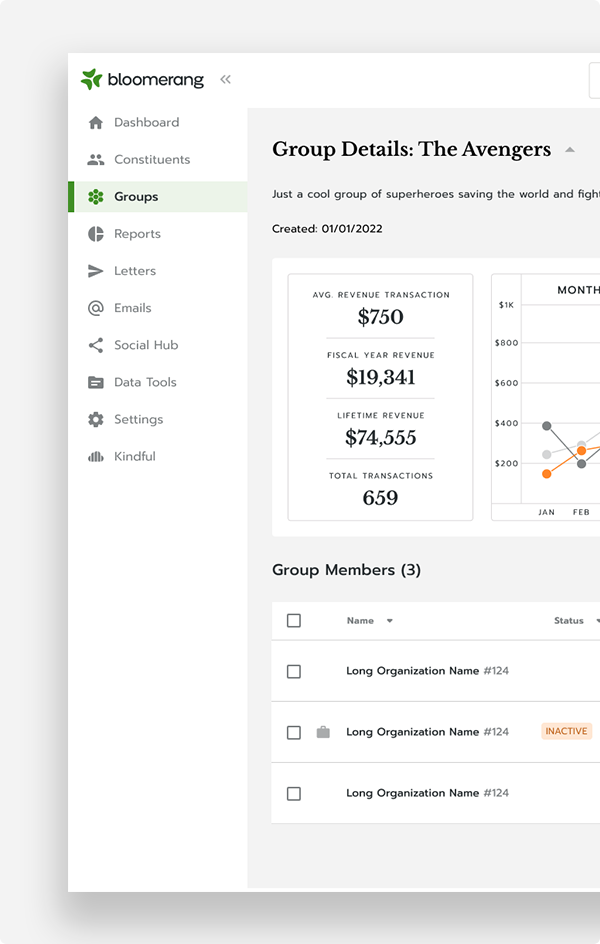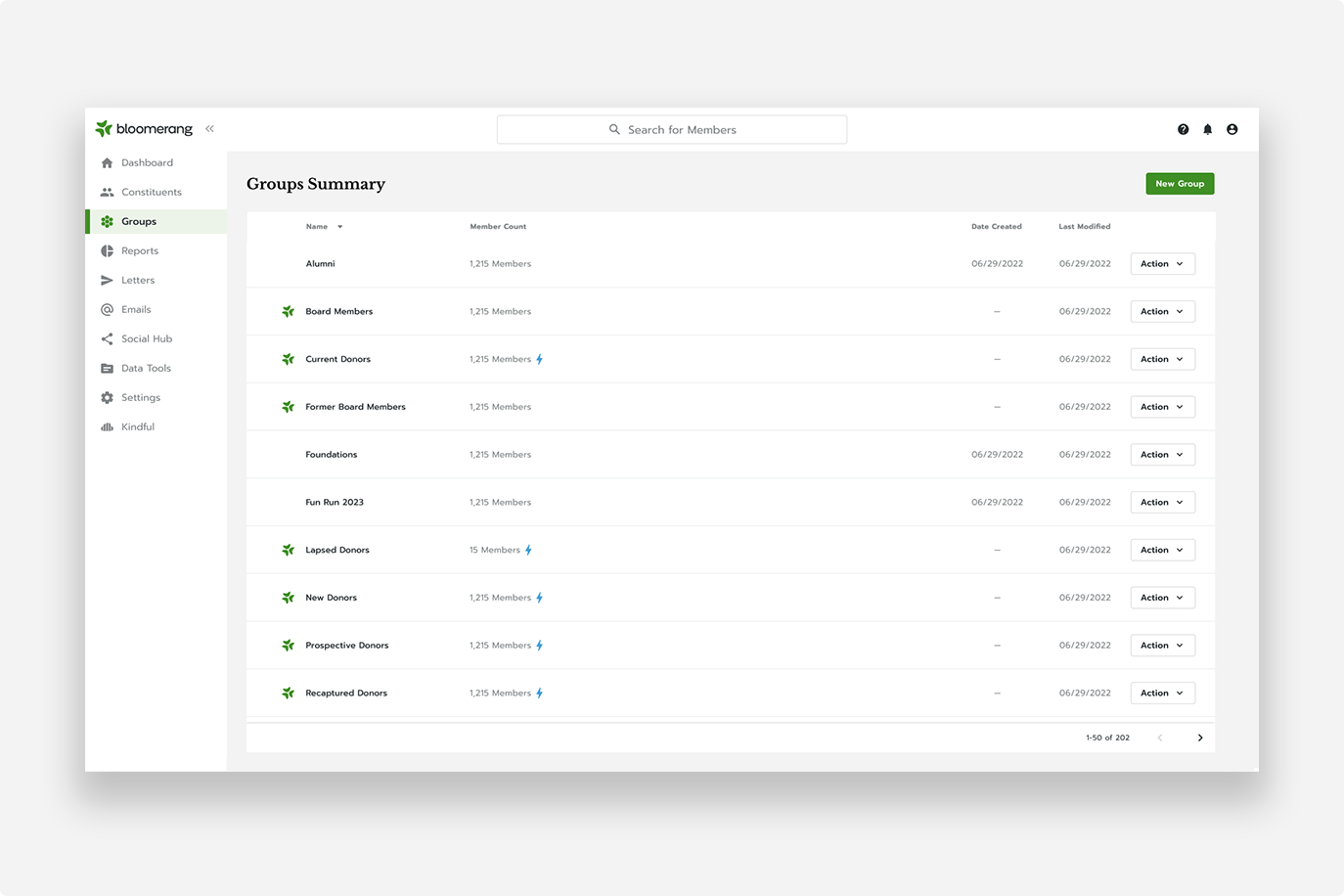Donor Segmentation
My role: Designer, Design Manager
Platform: Bloomerang CRM
Overview
To enable users to easily segment constituents and donors based on various criteria such as donor activity, location, donation potential, age etc. The feature allows for both custom and dynamically generated groups based on predefined attributes.
Problem Statement
Nonprofits and organizations using Bloomerang CRM face challenges in effectively managing and targeting their donors and constituents. Without efficient segmentation, outreach efforts become generic and less impactful, leading to lower engagement and retention. Users need a solution that allows them to categorize donors manually and dynamically to ensure personalized, strategic engagement.
User Goals & Pain Points
User Goals:
Effortlessly segment constituents for more personalized engagement.
Identify key donor groups such as first-time donors, lapsed donors, and major donors.
Automate donor classification to reduce manual work.
Enhance fundraising strategies through targeted outreach.
Pain Points:
Manually segmenting donors via spreadsheets or a third party tool is cumbersome and inefficient.
Difficulty in identifying high-value donors without extensive manual filtering.
Lack of dynamic, auto-updating groups to maintain accurate segmentation.
Inconsistent engagement due to a lack of clear donor categorization.
Research & Discovery
To develop an intuitive and effective segmentation tool, we conducted:
User Interviews
Engaged with nonprofit professionals to understand how they currently segment donors and their challenges.
Analysis
Researched existing CRM segmentation tools (e.g., Salesforce, Raiser’s Edge) to identify best practices and gaps.
Behavioral Data
Examined how users interact with donor data within Bloomerang to determine common segmentation patterns.
Key Insights
Personalized segmentation drives donor engagement: Users who effectively segment donors see higher engagement rates.
Automation reduces workload: Users prefer automation for common segmentation needs, such as identifying major or lapsed donors.
Customizability is key: Users need flexibility to define segmentation rules that fit their unique fundraising strategies.
Data-driven decisions improve retention: Organizations that actively segment and target donors experience better retention rates.
Design Process
User Research & Ideation
Conducted usability studies and gathered feedback from stakeholders.
Prototyping
Created prototypes to explore different segmentation interfaces.
User Testing
Tested prototypes with nonprofit professionals to validate usability and effectiveness.
Iterative Refinements
Improved the UI/UX based on user feedback and testing results.
Solution
Groups provides users with a seamless way to segment their database, offering both customizable and dynamic groups for enhanced donor engagement.
Custom Groups: Users can create their own donor segments based on specific criteria such as location, donation frequency, or engagement history.
Dynamic Groups: Automatically generated groups based on Bloomerang’s predefined conditions (e.g., First-Time Donors, Lapsed Donors, Major Donors).
Real-Time Updates: Dynamic groups update automatically as donor data changes.
Advanced Filtering: Users can apply multiple filters to refine their segmentation strategy.
Group Analytics: Insights into each group’s engagement, donation trends, and performance.
Impact & Benefits
Enhanced Donor Engagement: Personalized outreach strategies improve donor relationships.
Time Efficiency: Automates segmentation, reducing manual work for nonprofit teams.
Data-Driven Decision Making: Provides actionable insights for improved fundraising efforts.
Improved Retention: Targeted communication fosters stronger donor relationships.
Conclusion
Groups empowers nonprofits to optimize their donor segmentation process with ease. By combining automation with customization, the feature allows organizations to engage donors strategically, streamline their workflow, and maximize fundraising potential. This user-centric approach enhances donor relationships and helps nonprofits achieve their engagement and retention goals.




